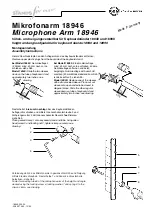
BCM-MS, BCM-LS
4.2.2.1 "CANopen Object Dictionary" In General
CANopen Object Dictionary (OD) is an object directory where each object can be addressed with a 16 bit index. Each object can
consist of several data elements which can be addressed with an 8 bit subindex.
The principle layout of a CANopen object directory is shown below.
Index (hex)
Object
0000
-
0001
- 001F
Static data types (Boolean, Integer)
0020
- 003F
Complex data types (consisting of standard data types)
0040
- 005F
Complex data types, manufacturer specific
0060
- 007F
Static data types (device profile specific)
0080
- 009F
Complex data types (device profile specific)
00A0
- 0FFF
reserved
1000
- 1FFF
Communication Profile Area (e.g. device type, error register, supported PDOs, ..)
2000
- 2FFF
Communication Profile Area (manufacturer specific)
6000
- 9FFF
Device profile specific Device Profile Area (e.g. "DSP-401 Device Profile for I/O Modules”)
A000
- FFFF
reserved
Tab. 20:
General CANopen Object Dictionary structure
4.2.2.2 CANopen Communication Objects
Communication objects transmitted in CANopen are described by services and protocols and classified as follows:
– Network Management (NMT) is services and bus initialization, error handling, and node management
– Process Data Objects (PDOs) are used to transmit real-time process data
– Service Data Objects (SDOs) allow read and write access to the object directory of a node
– Special Function Object Protocol allows application-specific network synchronisation, timestamp transmission and emer-
gency messages.
The following is an example for initializing the network with a CANopen Master and a sensor.
(A)
Once powered, the sensor sends a boot-up message within approx. 5 seconds and once the preoperational state is
reached. In this state the sensor only sends heartbeat messages when configured accordingly.
(B)
The sensor can then be configured via SDOs, which is typically not required as the sensor automatically saves the con-
figured communication parameters.
(C)
To put the sensor in operational state, either the corresponding message can be sent to all CANopen consumers or spe-
cifically to the sensor. In operational state, the sensor sends the supported PDOs as configured, either periodically or
triggered by sync messages.
Wait for sensor boot-up or heart-beat
Configuring the sensor, communication parameters via SDO
NMT to all node/to sensor to enter Operational Mode
Fig. 10: CANopen bus initialization process
26
Bühler Technologies GmbH
BE150104 ◦ 03/2021
















































